Session 24/Egg Day:
We made eggs every which way: Scrambled, Poached, Over Easy, Omelets, Hard Boiled, Soft Boiled, etc.
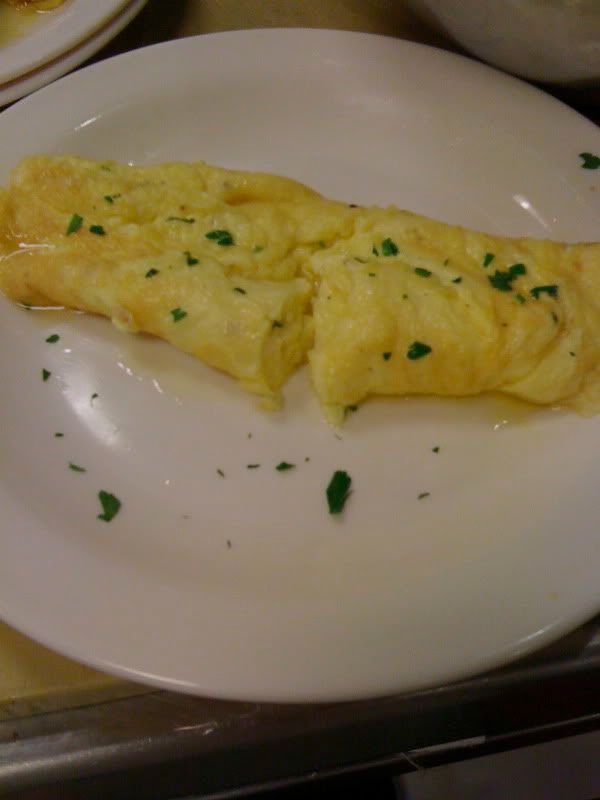

Egg after egg after egg after egg. Chef Phil encouraged us to perfect our techniques, especially the French Rolled Omelet, which should be perfectly yellow without a single hint of brown. We went through at least two huge boxes of eggs.
Hundreds of eggs! And if you didn't stuff your face with them, they went into the Compost bin. I tried at least five times to make the perfect Over Easy eggs. Never in my life have I ever accomplished flipping them without breaking the yolk, and Egg Day was no exception.
The ironic thing is that I'm trying to start interning in the school's restaurant for brunch soon. Eh, we'll see how that goes.
Session 25/Tart Day:
Pear and Apple Tarts
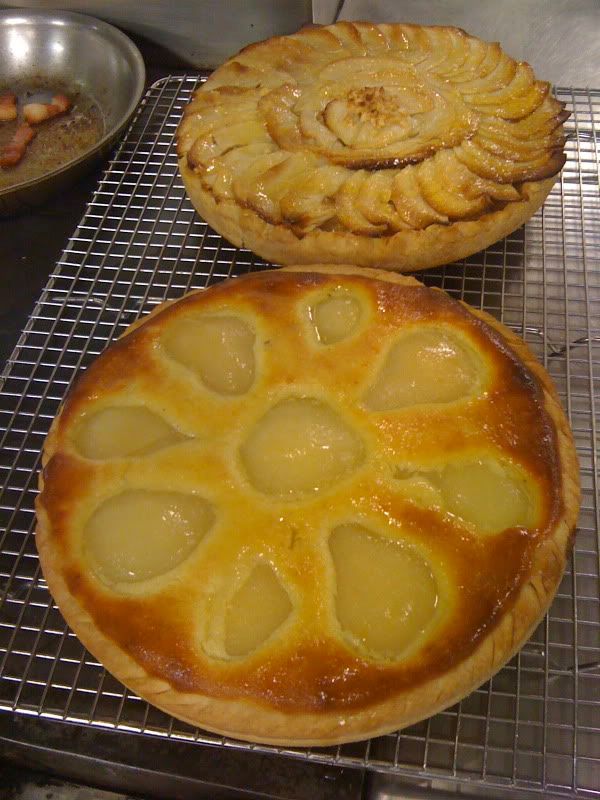
What better way to follow a day of eggs than with the start of our pastry sessions? My partner and I had a successful first day of pastries. He confessed to me that he secretly wished he could be a pastry chef and preferred baking to anything.
Our tarts came out great except that the crust was just a little undercooked due to our rushed blind baking. Still, they came out looking quite stunning.
Session 26 - 31/Cakes, Crepes, Doughs, Souffles
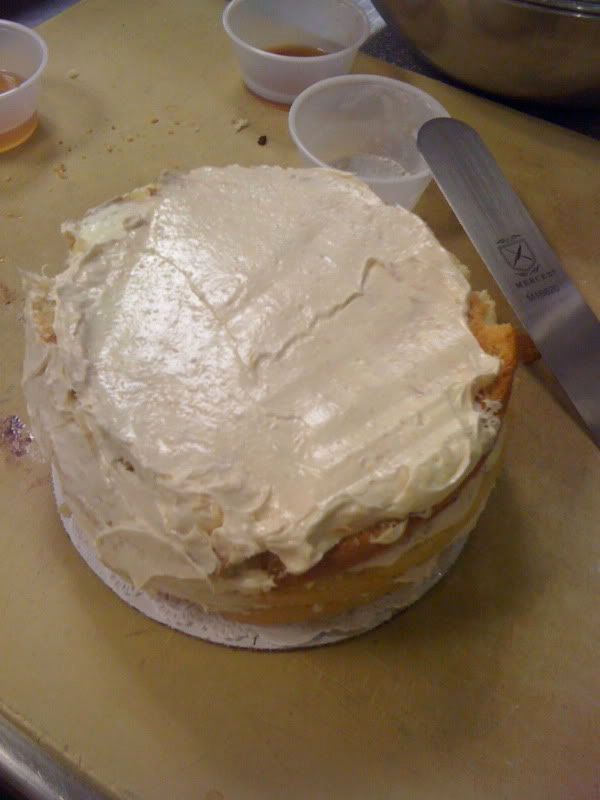
I quickly learned that you can't really "wing it" when it comes to baking. I didn't incorporate enough air(by beating) in my little cake, and I also didn't allow it to bake long enough, so it came out with a gooey center and didn't rise too well. I tried to cover this up with extra frosting, but ended up spreading cake crumbs all over, so I covered the frosting up with cocoa powder. Uhh.. overkill?
Also, a clever classmate of mine asked, "Why'd you put a pretzel on your cake?" Hah, funny.
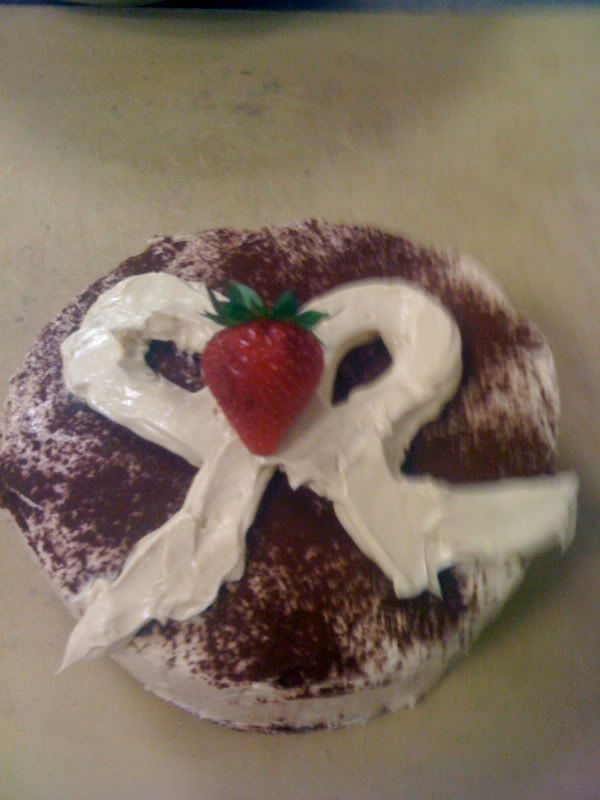
Crepes were fun, and I found them to be easier than pancakes. I always thought they'd be complicated, but since they're so thin, they're easy to monitor.
I wish I had pictures of our fruit tarts. Everyone's came out pretty- like something you'd see at a hotel's dessert buffet. Oh, and Eclairs! Who knew they'd be so simple? I'd probably never make them at home, but still, I am now less impressed with Dunkin Donuts.
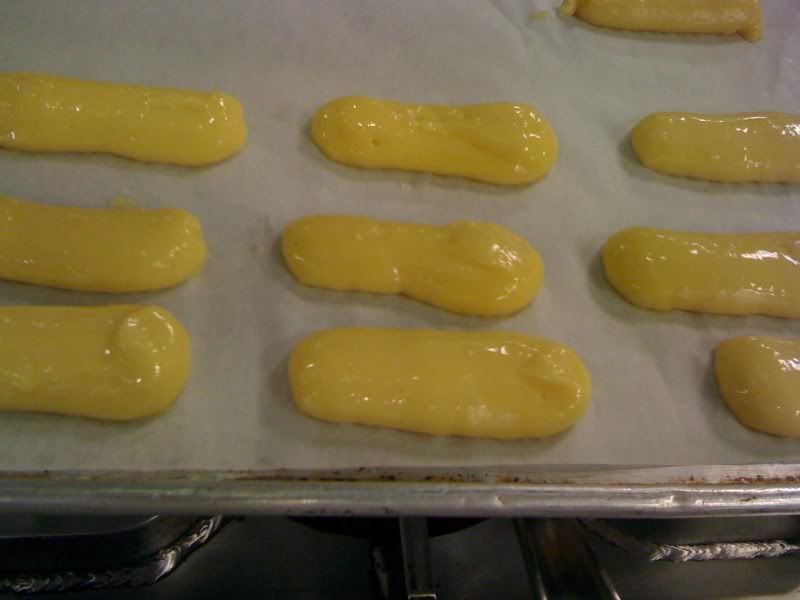 |
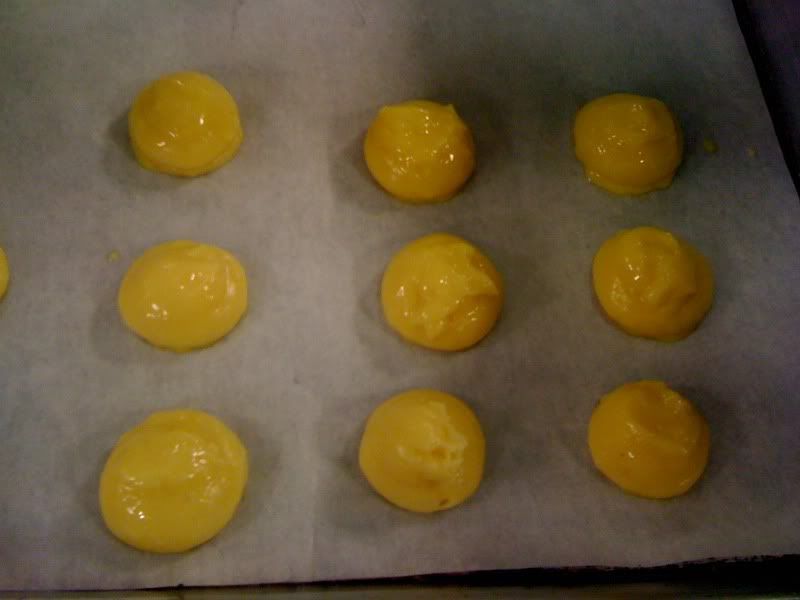 |
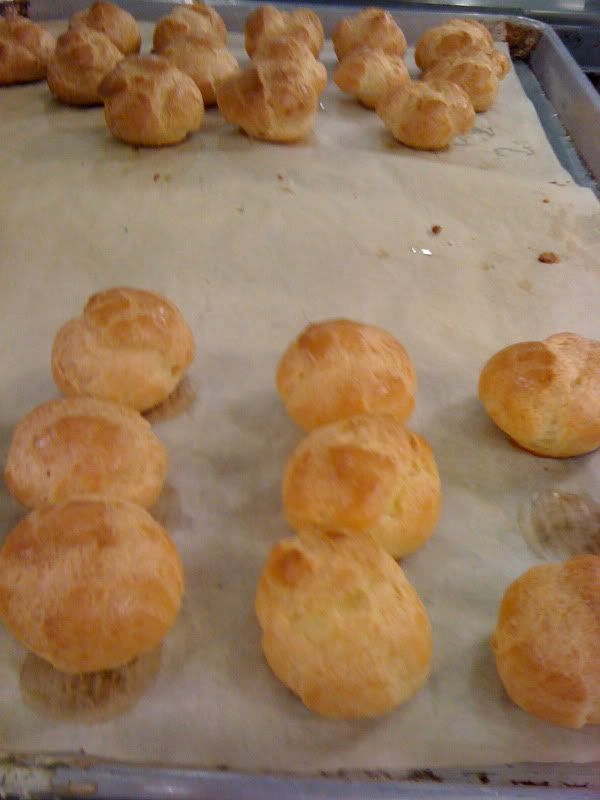
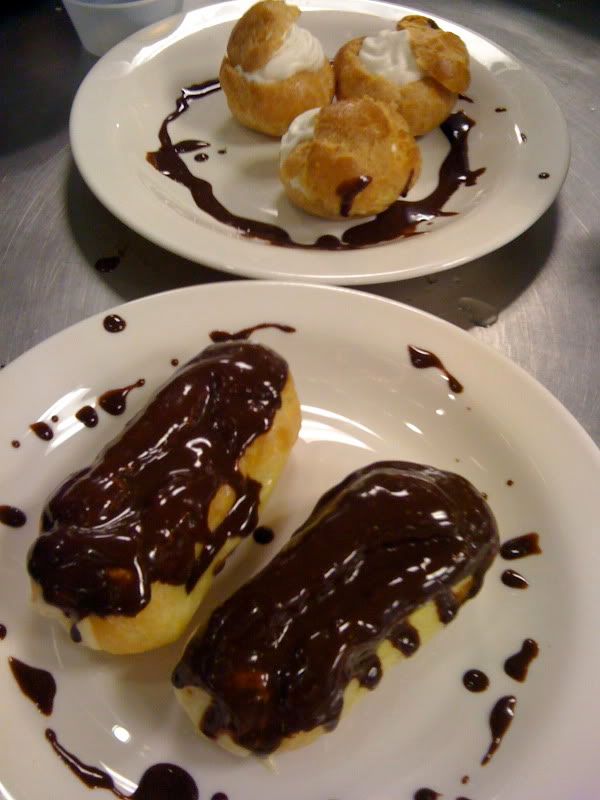
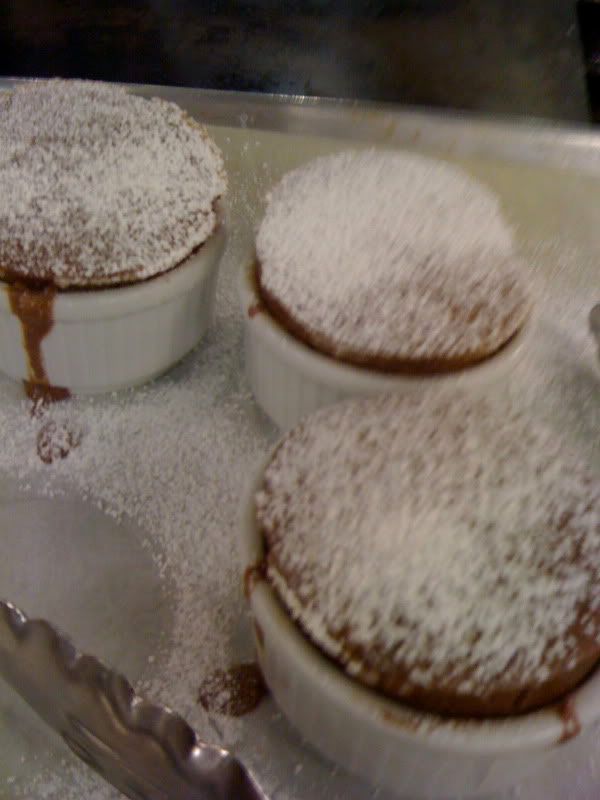 |
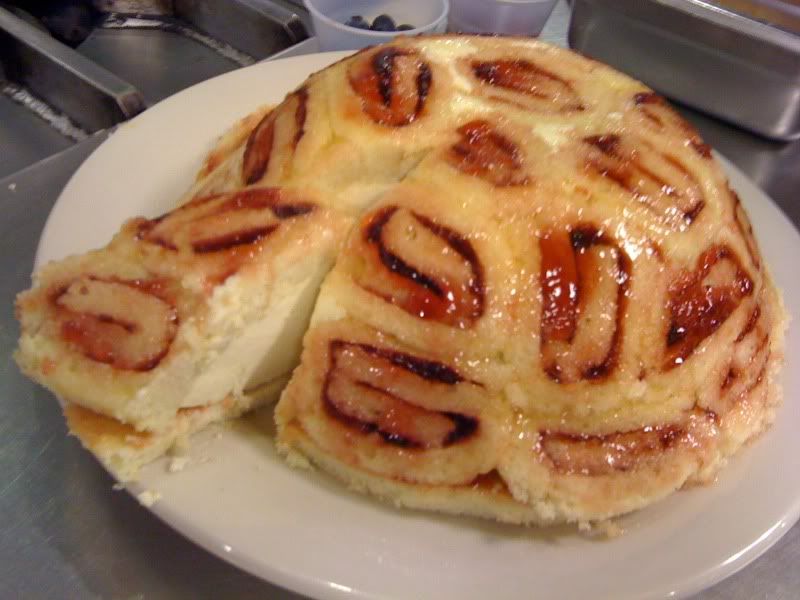 |
Sessions 32 - 35/Nutrition and Food Costing:
Not a lot of cooking went on during these sessions. Just a whole lot of lecture time and note taking.
A few tidbits:
- Cheese loses its lactose after 60 days. This explains why I get super gassy from fresh mozzarella, and not from aged parmesan.
- A great natural sugar substitute for diabetics is Stevia, made from plants, and not chemicals, like Equal and Sweet N Low.
- America consumes a ratio of 20 Omega-6 fatty acids for every Omega-3. Cultures known for long life spans consume a ratio of about 3 to 2. Do yourself a favor and add nuts, seeds, and leafy greens to your daily diets.
- Corn is high in Omega-6's, so anytime you can, choose to eat grass fed meats, which are high in Omega 3's.
- Chicken skin is very monounsaturated, which means it's a good fat, like olive oil.
Session 36/Plating Styles:
We talked a lot about different menu designs(From prix fixe to a la carte) and plating styles. The general rule of thumb is to keep one-third of the plate visible when plating. It seems like a tactic to rip people of their money, but it's actually a lot more pleasing to the eye. A good example of a crowded plate is my Nicoise Salad from my previous entry.

We were given the chance to create our own dish using Flounder. I wanted to make something Guam-inspired and settled on a dish that wasn't so much Guam as it was tropical. It was a citrus-marinated flounder with a roasted pepper, mango, and avocado salsa, and a pineapple and coconut rice. It was deeelicious, but you'll have to take my word for it because Chef Phil didn't taste any of the dishes. His main concern was our plating style. He suggested I brush my fish with a little olive oil next time to counteract it's dryness. And there was also too much rice for the amount of fish on the plate. Otherwise it wasn't too crowded and was well-plated.
